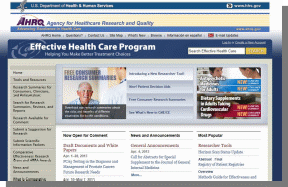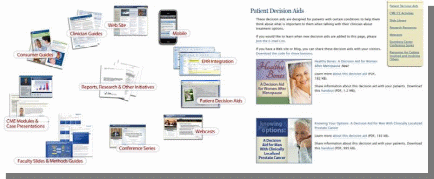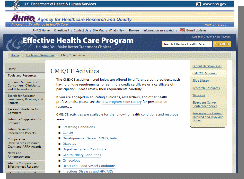Form #1 Web-based Survey
Generic Clearance for the Collection of Qualitative Feedback on Agency Service Delivery
Attachment A -- Web-based Survey
Customer Satisfaction with AHRQ's Patient-Centered Outcomes Research (PCOR) Educational Materials
OMB: 0935-0179
Attachment A - SURVEY
Form
Approved
OMB No. 0935-0179
Exp. Date 7/31/2014
Agency for Healthcare Research and Quality
Healthcare Providers/ Educators Customer Satisfaction and Needs Assessment
Survey
Questionnaire
Version
5
Public
reporting burden for this collection of information is estimated to
average 10
minutes per response, the estimated time required to complete
the survey. An agency may not conduct or sponsor, and a person
is not required to respond to, a collection of information unless it
displays a currently valid OMB control number. Send
comments regarding this burden estimate or any other aspect of
this collection of information, including suggestions for reducing
this burden, to: AHRQ Reports Clearance Officer Attention: PRA,
Paperwork Reduction Project (0935-XXXX) AHRQ,
540 Gaither Road, Room # 5036, Rockville, MD 20850.
Figure 1: Schematic of the Health Educator Customer Satisfaction and Needs Assessment Survey Branch Pattern
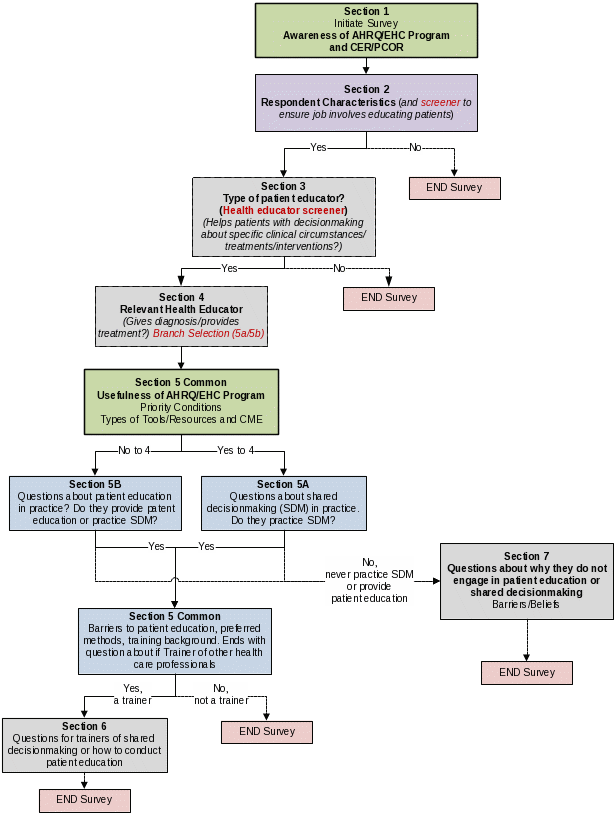
SECTION 1: |
|||||||||||||||||||||||||||||||||||||||||||||||||||||||||||||||||||||||||||||||||||||||||||||||||||||||||||||||||||||||||||
# |
Question |
Measurement Scale |
Skip Pattern |
||||||||||||||||||||||||||||||||||||||||||||||||||||||||||||||||||||||||||||||||||||||||||||||||||||||||||||||||||||||||
Agency for Healthcare Research and Quality (AHRQ) Effective Health Care Program Web site
|
|||||||||||||||||||||||||||||||||||||||||||||||||||||||||||||||||||||||||||||||||||||||||||||||||||||||||||||||||||||||||||
|
|
How familiar are you with the following:
|
|
|
||||||||||||||||||||||||||||||||||||||||||||||||||||||||||||||||||||||||||||||||||||||||||||||||||||||||||||||||||||||||
|
|
How familiar are you with comparative effectiveness research (CER), also sometimes called patient-centered outcomes research (PCOR)? |
|
Options 1 & 2, go to Q3. Option 3 & 4, skip to Q4 |
||||||||||||||||||||||||||||||||||||||||||||||||||||||||||||||||||||||||||||||||||||||||||||||||||||||||||||||||||||||||
|
|
How often do you use the following sources to obtain information about comparative effectiveness research or PCOR? |
Please specify any specific sources/organizations you have found useful to you (e.g., journals, government agencies, etc.)____________
|
|
||||||||||||||||||||||||||||||||||||||||||||||||||||||||||||||||||||||||||||||||||||||||||||||||||||||||||||||||||||||||
Section 2 – Respondent Characteristics and Health Educator Screener |
|||||||||||||||||||||||||||||||||||||||||||||||||||||||||||||||||||||||||||||||||||||||||||||||||||||||||||||||||||||||||||
|
|
|
Measurement Scale |
Skip Pattern |
||||||||||||||||||||||||||||||||||||||||||||||||||||||||||||||||||||||||||||||||||||||||||||||||||||||||||||||||||||||||
|
|
What type of health care practitioner are you? Select the option that best characterizes your role.
|
(Please specify specialty or other occupation category)_____________________ |
|
||||||||||||||||||||||||||||||||||||||||||||||||||||||||||||||||||||||||||||||||||||||||||||||||||||||||||||||||||||||||
|
|
How many years have you been in your current occupation? |
|
|
||||||||||||||||||||||||||||||||||||||||||||||||||||||||||||||||||||||||||||||||||||||||||||||||||||||||||||||||||||||||
|
|
In what kind of setting do you practice the majority of the time? |
Other (Please specify)______________________ |
|
||||||||||||||||||||||||||||||||||||||||||||||||||||||||||||||||||||||||||||||||||||||||||||||||||||||||||||||||||||||||
|
|
Approximately what percentage of the patients in your practice setting has a chronic disease? (Estimating is fine) |
|
|
||||||||||||||||||||||||||||||||||||||||||||||||||||||||||||||||||||||||||||||||||||||||||||||||||||||||||||||||||||||||
|
|
Is English your first language |
If no, what is your first language? ___________________ |
|
||||||||||||||||||||||||||||||||||||||||||||||||||||||||||||||||||||||||||||||||||||||||||||||||||||||||||||||||||||||||
|
|
Approximately what percentage of the patients you work with is uninsured, underinsured, or underserved? |
|
|
||||||||||||||||||||||||||||||||||||||||||||||||||||||||||||||||||||||||||||||||||||||||||||||||||||||||||||||||||||||||
|
|
Do your job responsibilities include educating patients or providing health education to patients or their caregivers?
|
|
First two options skip to question 11.
For “Not at all,” skip to end of survey. |
||||||||||||||||||||||||||||||||||||||||||||||||||||||||||||||||||||||||||||||||||||||||||||||||||||||||||||||||||||||||
Section 3 – Screener about type of health education provided by respondent (e.g., helping patients with clinical decisionmaking or just general health promotion, etc.)? Note, this questions attempts to further target individuals who would potentially benefit from AHRQ PCOR/CER information. |
|||||||||||||||||||||||||||||||||||||||||||||||||||||||||||||||||||||||||||||||||||||||||||||||||||||||||||||||||||||||||||
|
Question |
Measurement Scale |
Skip Pattern |
||||||||||||||||||||||||||||||||||||||||||||||||||||||||||||||||||||||||||||||||||||||||||||||||||||||||||||||||||||||||
|
|
Do your job responsibilities include helping patients make decisions about their health care or educating patients about their available options for treatment or other interventions (e.g., screening or diagnostic procedures)?
|
|
First two options skip to question 12. For option 3 “No” skip to end of survey.
|
||||||||||||||||||||||||||||||||||||||||||||||||||||||||||||||||||||||||||||||||||||||||||||||||||||||||||||||||||||||||
Section 4 – Screener for the type of health educator (e.g., someone involved in diagnosing/treating or other). Used to determine which branch of the survey the respondent will take. |
|||||||||||||||||||||||||||||||||||||||||||||||||||||||||||||||||||||||||||||||||||||||||||||||||||||||||||||||||||||||||||
|
|
Measurement Scale |
Skip Pattern |
||||||||||||||||||||||||||||||||||||||||||||||||||||||||||||||||||||||||||||||||||||||||||||||||||||||||||||||||||||||||
|
|
Do your job responsibilities include diagnosing illness, treating illness, writing prescriptions, or making referrals to other health care providers? |
|
Yes, go down path 5A
No, go down path 5B |
||||||||||||||||||||||||||||||||||||||||||||||||||||||||||||||||||||||||||||||||||||||||||||||||||||||||||||||||||||||||
Section 5A/5B Common Path – AHRQ Health Educator Tools and Resources |
|||||||||||||||||||||||||||||||||||||||||||||||||||||||||||||||||||||||||||||||||||||||||||||||||||||||||||||||||||||||||||
The Agency for Healthcare Research and Quality’s (AHRQ) is the lead Federal agency charged with improving the quality of health care for all Americans.
AHRQ conducts and synthesizes evidence on the effectiveness and comparative effectiveness of treatments and health care interventions for many health conditions. AHRQ also translates this information into tools and resources for clinicians and patients that can be used when making health care decisions.
|
|||||||||||||||||||||||||||||||||||||||||||||||||||||||||||||||||||||||||||||||||||||||||||||||||||||||||||||||||||||||||||
AHRQ
Tools and Resources for Patients and Clinicians |
|||||||||||||||||||||||||||||||||||||||||||||||||||||||||||||||||||||||||||||||||||||||||||||||||||||||||||||||||||||||||||
|
|
Which of the following AHRQ Effective Health Care Tools have your used in the past year? (Select all that apply) |
|
|
||||||||||||||||||||||||||||||||||||||||||||||||||||||||||||||||||||||||||||||||||||||||||||||||||||||||||||||||||||||||
|
|
How useful would it be to you, considering the time you have to spend with patients, to have the following tools? |
|
|
||||||||||||||||||||||||||||||||||||||||||||||||||||||||||||||||||||||||||||||||||||||||||||||||||||||||||||||||||||||||
|
|
If you could have any other tools to share with patients, what would they be? |
Open ended |
|
||||||||||||||||||||||||||||||||||||||||||||||||||||||||||||||||||||||||||||||||||||||||||||||||||||||||||||||||||||||||
|
|
Are there any other languages would you like to have tools translated into? |
Open ended |
|
||||||||||||||||||||||||||||||||||||||||||||||||||||||||||||||||||||||||||||||||||||||||||||||||||||||||||||||||||||||||
|
|
The following is a list of AHRQ’s priority conditions.
How useful to you would it be to have patient educational information or decisions aids on each of the following topics? |
|
|
||||||||||||||||||||||||||||||||||||||||||||||||||||||||||||||||||||||||||||||||||||||||||||||||||||||||||||||||||||||||
AHRQ – Effective Health Care Program Continuing Education
|
|||||||||||||||||||||||||||||||||||||||||||||||||||||||||||||||||||||||||||||||||||||||||||||||||||||||||||||||||||||||||||
|
|
Would you participate if accredited continuing education modules or workshops were available on how to use AHRQ decision aids and tools?
|
|
|
||||||||||||||||||||||||||||||||||||||||||||||||||||||||||||||||||||||||||||||||||||||||||||||||||||||||||||||||||||||||
Section 5A – Questions for clinicians who treat or diagnose patients and are involved in education related to helping patients make decisions about the treatment or intervention options |
|||||||||||||||||||||||||||||||||||||||||||||||||||||||||||||||||||||||||||||||||||||||||||||||||||||||||||||||||||||||||||
|
|
|
Measurement Scale |
Skip Pattern |
||||||||||||||||||||||||||||||||||||||||||||||||||||||||||||||||||||||||||||||||||||||||||||||||||||||||||||||||||||||||
Shared decisionmaking is a process where both the patient and clinician share information, participate in the decisionmaking process, and agree on the best strategy for treatment.
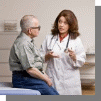


The clinician provides personalized information, tools, and/or decision aids to help the patient understand available treatment options, and encourages the patient to consider his or her personal values in making treatment-related decisions. |
|||||||||||||||||||||||||||||||||||||||||||||||||||||||||||||||||||||||||||||||||||||||||||||||||||||||||||||||||||||||||||
|
|
Using the definition above, how often do you involve your patients in a decisionmaking process regarding their care? |
|
Options 1-4 proceed to question 20.
Options 5 (Never), proceed to section 7
|
||||||||||||||||||||||||||||||||||||||||||||||||||||||||||||||||||||||||||||||||||||||||||||||||||||||||||||||||||||||||
New Page |
|||||||||||||||||||||||||||||||||||||||||||||||||||||||||||||||||||||||||||||||||||||||||||||||||||||||||||||||||||||||||||
|
|
For each of the following situations, how often do you involve patients in decisionmaking or educational discussions related to their care: |
|
|
||||||||||||||||||||||||||||||||||||||||||||||||||||||||||||||||||||||||||||||||||||||||||||||||||||||||||||||||||||||||
|
|
When you engage in shared decisionmaking with patients, how do you typically do it?
Please select all that apply. |
|
|
||||||||||||||||||||||||||||||||||||||||||||||||||||||||||||||||||||||||||||||||||||||||||||||||||||||||||||||||||||||||
Section 5B – Questions for healthcare professionals who do NOT treat or diagnose patients but are involved in education related to helping patients to understand their treatment or intervention options |
|||||||||||||||||||||||||||||||||||||||||||||||||||||||||||||||||||||||||||||||||||||||||||||||||||||||||||||||||||||||||||
# |
Question |
Measurement Scale |
Skip Pattern |
||||||||||||||||||||||||||||||||||||||||||||||||||||||||||||||||||||||||||||||||||||||||||||||||||||||||||||||||||||||||
|
|
How often do your interactions with patients include education to help them or their caregivers understand the options available for their care?
For example, helping them to understand technical information about their condition, the harms and benefits associated different medicines, or procedures they may be considering.
|
|
Options 1-4 proceed to question 20.
Option 5, proceed to section 7 |
||||||||||||||||||||||||||||||||||||||||||||||||||||||||||||||||||||||||||||||||||||||||||||||||||||||||||||||||||||||||
|
|
How often do your decisionmaking or educational discussions with patients/caregivers relate to each of the following situations:
Helping them to…. |
|
|
||||||||||||||||||||||||||||||||||||||||||||||||||||||||||||||||||||||||||||||||||||||||||||||||||||||||||||||||||||||||
|
|
When you engage in educational discussions with patients, how do you do it?
Please select all that apply. |
|
|
||||||||||||||||||||||||||||||||||||||||||||||||||||||||||||||||||||||||||||||||||||||||||||||||||||||||||||||||||||||||
Section 5A/5B Common Path – Shared Decision Making/Patient Education Questions |
|||||||||||||||||||||||||||||||||||||||||||||||||||||||||||||||||||||||||||||||||||||||||||||||||||||||||||||||||||||||||||
|
|
Which of the following elements would you say are part of your role in helping patients who are confronted with options regarding their care?
Please select all that are relevant to you. |
|
|
||||||||||||||||||||||||||||||||||||||||||||||||||||||||||||||||||||||||||||||||||||||||||||||||||||||||||||||||||||||||
|
|
How much time per visit are you able to spend with individual patients educating them or discussing options related to medical treatments, procedures, or medicines? |
|
|
||||||||||||||||||||||||||||||||||||||||||||||||||||||||||||||||||||||||||||||||||||||||||||||||||||||||||||||||||||||||
|
|
To what extent are you encouraged by your organization to educate patients or to help them better understand their options for treatments or interventions related to their clinical care? |
|
|
||||||||||||||||||||||||||||||||||||||||||||||||||||||||||||||||||||||||||||||||||||||||||||||||||||||||||||||||||||||||
|
|
How often do the following situations prevent you from fully engaging patients as much as you would like in the decisionmaking process or educating them about health care options?
|
|
|
||||||||||||||||||||||||||||||||||||||||||||||||||||||||||||||||||||||||||||||||||||||||||||||||||||||||||||||||||||||||
|
|
How often do you use the following with patients or caregivers to help them understand their health conditions, or their various treatment or intervention options?
|
|
|
||||||||||||||||||||||||||||||||||||||||||||||||||||||||||||||||||||||||||||||||||||||||||||||||||||||||||||||||||||||||
|
|
How useful have you found the following types of tools when educating patients or caregivers, or when helping them to make decisions about their care?
|
|
|
||||||||||||||||||||||||||||||||||||||||||||||||||||||||||||||||||||||||||||||||||||||||||||||||||||||||||||||||||||||||
|
|
How often do you use the following approaches to obtain information about, or gain access to, patient decision aids? |
|
|
||||||||||||||||||||||||||||||||||||||||||||||||||||||||||||||||||||||||||||||||||||||||||||||||||||||||||||||||||||||||
|
|
What is your preferred way for learning about available tools and resources that you can share with patients about specific treatments or interventions? |
|
|
||||||||||||||||||||||||||||||||||||||||||||||||||||||||||||||||||||||||||||||||||||||||||||||||||||||||||||||||||||||||
Section 5A/B Previous training questions |
|||||||||||||||||||||||||||||||||||||||||||||||||||||||||||||||||||||||||||||||||||||||||||||||||||||||||||||||||||||||||||
|
|
What types of training, if any, have you received regarding patient education or shared decisionmaking? |
|
|
||||||||||||||||||||||||||||||||||||||||||||||||||||||||||||||||||||||||||||||||||||||||||||||||||||||||||||||||||||||||
|
|
Based on the training you have received for providing patient education or shared decisionmaking, how often would you say that you apply what you learned in practice? |
|
First three option move to question 18
Later two option move to question 17 |
||||||||||||||||||||||||||||||||||||||||||||||||||||||||||||||||||||||||||||||||||||||||||||||||||||||||||||||||||||||||
|
|
If you answered rarely or never to the previous question, please explain why. |
Open ended |
|
||||||||||||||||||||||||||||||||||||||||||||||||||||||||||||||||||||||||||||||||||||||||||||||||||||||||||||||||||||||||
|
|
What about your training did you find valuable in helping you to apply shared decisionmaking approaches in practice? |
Open ended |
|
||||||||||||||||||||||||||||||||||||||||||||||||||||||||||||||||||||||||||||||||||||||||||||||||||||||||||||||||||||||||
|
|
How valuable would you find each of the following topics in a training course on educating patients about their health care options |
|
|
||||||||||||||||||||||||||||||||||||||||||||||||||||||||||||||||||||||||||||||||||||||||||||||||||||||||||||||||||||||||
|
|
Are you involved in training other health care professionals about how to communicate or educate patients or their caregivers?
|
|
If yes, go to question 36.
If no, end survey |
||||||||||||||||||||||||||||||||||||||||||||||||||||||||||||||||||||||||||||||||||||||||||||||||||||||||||||||||||||||||
Section 6: Questions for trainers of other health care professionals or others about shared decisionmaking |
|||||||||||||||||||||||||||||||||||||||||||||||||||||||||||||||||||||||||||||||||||||||||||||||||||||||||||||||||||||||||||
|
|
In your training of other health care professionals related to patient education and/or shared decisionmaking, how important are the following competencies: |
|
|
||||||||||||||||||||||||||||||||||||||||||||||||||||||||||||||||||||||||||||||||||||||||||||||||||||||||||||||||||||||||
|
|
In your training of other health care professionals related to patient education and/or shared decisionmaking, how useful have you found the following tools to be: |
|
|
||||||||||||||||||||||||||||||||||||||||||||||||||||||||||||||||||||||||||||||||||||||||||||||||||||||||||||||||||||||||
SECTION 7: Health care professionals whose job includes patient education/shared decisionmaking, but who do not currently practice it. |
|||||||||||||||||||||||||||||||||||||||||||||||||||||||||||||||||||||||||||||||||||||||||||||||||||||||||||||||||||||||||||
# |
Questions |
Measurement Scale |
Skip Pattern |
||||||||||||||||||||||||||||||||||||||||||||||||||||||||||||||||||||||||||||||||||||||||||||||||||||||||||||||||||||||||
|
|
In your own opinion, how important is shared decisionmaking in medical decisions with patients |
|
|
||||||||||||||||||||||||||||||||||||||||||||||||||||||||||||||||||||||||||||||||||||||||||||||||||||||||||||||||||||||||
|
|
You noted that your interactions with patients “never” include education to help them or their caregivers understand the options available for their care.
Which of the following best characterizes the reasons for your response (select all the apply) |
|
|
||||||||||||||||||||||||||||||||||||||||||||||||||||||||||||||||||||||||||||||||||||||||||||||||||||||||||||||||||||||||
END SURVEY – Thank you for taking time to complete this survey. |
|||||||||||||||||||||||||||||||||||||||||||||||||||||||||||||||||||||||||||||||||||||||||||||||||||||||||||||||||||||||||||
| File Type | application/vnd.openxmlformats-officedocument.wordprocessingml.document |
| Author | Michelle Tregear |
| File Modified | 0000-00-00 |
| File Created | 2021-02-01 |
© 2025 OMB.report | Privacy Policy
